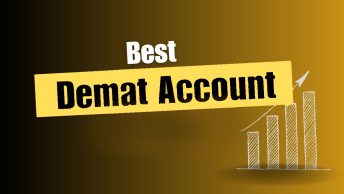Sales enablement is the practice of equipping sales representatives with the tools, processes, technology they need to sell more successfully and generate more revenue. Sales enablement improves the experience salespeople give by maximizing every point of engagement with customers. Content engagement and how it influences sales performance are revealed through sales enablement technologies. Sales representatives have better dialogues with prospects and customers and function as trusted advisors, allowing them to build long-term connections with them.
Sales enablement is critical for growing a sales team beyond a few high-performers. It gives all salespeople the best practices, expertise, tools, and resources they need to succeed. Designating overachievers as program leaders/teachers is one excellent practice in sales enablement. B2B sales enablement solutions in the modern digital environment are frequently buyer-focused, with the underlying goal of assisting sellers in identifying the right buyers and engaging them effectively throughout the customer journey. It’s all about removing any obstructions to pleasant interactions and a smooth buying process.
Before moving to the benefits of sales enablement we must know about the tool. A platform or system that gives visibility across the sales content lifecycle is referred to as a sales enablement tool. A sales enablement platform closes the loop between marketing, sales, and customers by allowing teams to track content performance from publishing to pitch with strong search, scoring, and synchronizing features.
We’ll go through some of the top sales enablement perks and how they can help you boost your bottom line.
- Effectiveness of sales – It may go without saying, but one of the most important advantages of sales enablement is that your sales staff are more technically efficient. Data from sales enablement systems can be connected with CRM and DAM systems already in place. Every change in your sales department’s processes or strategy realignment can be simply scaled as needed. There’s no need to be concerned about contrasting data sets or spending time manually upgrading separate software. As a result, you’ll be able to spend more time selling rather than entering data. A win-win-win situation with lower overhead, less administration, and more uptime.
- Empowered sales managers – As sales managers are the ones who put sales enablement into action, their support is essential. It takes months to coach and train sales reps strategically, and continuing professional development is a yearly goal. Managers can hire better and ramp quicker with a productive sales enablement program backed by smart, user-friendly technology. Sales enablement solutions are pre-loaded with self-service features, blended-learning modules, and interactive developmental milestones, relieving sales managers of the stress of doing all of the real work.
- Sync up your sales systems – Sales representatives should use technology to help them work smarter, not harder. However, if you introduce too many new tools at once, salespeople will waste time attempting to adjust to new systems and will eventually burn out before attaining ideal adoption. How can you provide salespeople with a single point of access to the materials they need, when they need them, without overwhelming them with too many options? A sales enablement platform provides salespeople with a single point of access to the most up-to-date sales tools, which they may access from their laptop, mobile device, iPad, or existing CRM system. Sales enablement gives up the hottest material and lets reps modify it with just a few clicks, rather than asking them to comb through a variety of sales materials.
- Align sellers with resources – Your clients are going through their own purchase path while your sellers are going through your sales process. This journey frequently takes unexpected turns that a structured sales strategy cannot anticipate. So, how can you empower sellers with the resources they need to follow the customer’s lead and respond to market or competitive environment shifts? In the context of where sellers are in the sales process, a sales enablement platform recommends important features… As selling scenarios change, it’s simple to acquire extra information on the go. As a result, retailers may be flexible and provide customers with the experience they deserve at every stage of the transaction.
- Track engagement – The average company spends $17.5 million on content generation, but the majority of it goes to waste because it is difficult to access or use. Such a large amount of squandered content is especially harmful to sales organizations that rely on useful resources throughout the deal’s lifecycle. How can you be confident that salespeople are going to identify the proper material and then measure their usage so that you can make better content investments in the future? A sales enablement feature allows marketing to keep tabs on the information that sellers are utilizing – as well as the content that sellers still require. It shows you which resources your top sellers utilize the most, at what point of the sales cycle they’re used, and what materials are most productive for them. Your entire sales environment benefits when sellers are appropriately empowered to function efficiently and successfully, whether your sales organization has 10 reps or 10,000.
- Personalize your account with ease – There is no one-size-fits-all approach to solving complex business issues. Customers also demand more than a one-size-fits-all purchasing experience. Salespeople must be able to customize their messages, value propositions, and presentations to fit the specific business demands of each customer. How can your sellers provide buyers the main stage recognition they deserve without spending weeks on information customization and optimization? A sales enablement platform makes it simple to turn marketing-approved material into client-facing presentations that are ready to go. It enables sales professionals to build tailored sales documents like presentations and proposals by merging content and data from multiple sources within the company. As a consequence, you’ll have focused, client-ready sales materials that are customized, current, and corporate-approved to assure compliance.
Conclusion
It’s a strategy for bringing together sales, marketing, and operations stakeholders with the same objective of providing salespeople with the resources, tools, and processes they need to sell effectively. And using technology to enhance and support it all. MindTickle’s novel capabilities for on-demand, online training, bite-sized mobile updates, gamification-based learning, coaching, and role-playing are used by companies across a wide range of industries to ensure world-class sales success.







